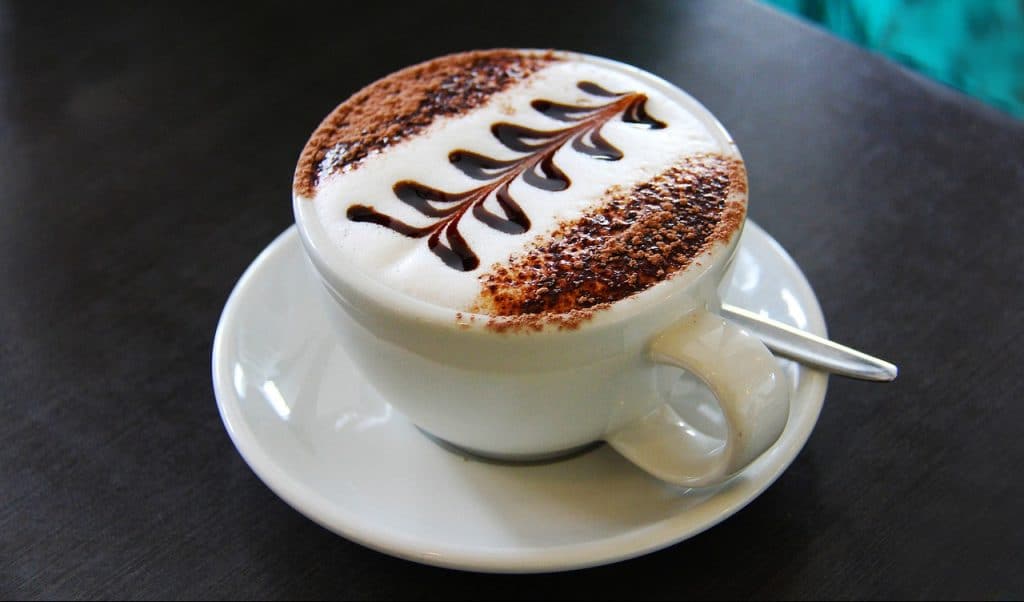Although Italians are not the one discovered coffee bean, they have devised many creative ways to make coffee and give birth to some of the best coffee drinks in the world. In particular, it is impossible not to mention cappuccino – a type of coffee drink that has fascinated the world for decades.
Table of Contents
What is Cappuccino?
Cappuccino was first introduced in Italy in the 17th century. The name of this drink comes from the names of the Capuchin monks (Latin: Ordo Fratrum minorum Cappucinorum), the robes of these monks are similar to the brown tones of a perfect cup of cappuccino. The cap of this cloak is known in Italian as cappuccio.
Today, you can easily find cappuccino in the menu of most coffee with espresso machines across the globe.
A cup of traditional cappuccino will consist of 3 layers: espresso, steamed milk, and milk foam on top. At someplace, the barista also garnishes it with some chocolate or cinnamon powder.
Is cappuccino a coffee?
It is an espresso-based drink; thus, cappuccino is a coffee.
Some people might think that espresso is not coffee because coffee in their knowledge is brewed coffee from drip coffee makers, French press, and so on.
However, both espresso and brewed coffee are made from the same ingredient, which is roasted coffee beans. Thus they are both coffee drinks.
What are cappuccino cup sizes and ratios?
Traditionally cappuccino is served in small size coffee cups, which range from 150ml to 180ml (equal to 5oz to 6oz). However, today, we also can see it in a much larger cup, especially in the coffee chain. Starbucks cappuccino is sold in 8oz, 12oz, 16oz, and 20oz mug.
In terms of ratio, a cup of cappuccino in Italy will be made with 25ml of espresso and filled up with steamed milk and milk foam with an equal ratio. In other parts of the world, it typically consists of 3 equal parts: espresso, steamed milk, and milk foam.
How is cappuccino made?
Step 1: Getting espresso shot
Being espresso-based drink, thus, to make cappuccino, at first, we need to have espresso coffee. The number of espresso shots usually depends on the size of the coffee cup. The larger the size, the more espresso shots will be used.
Step 2: Steaming milk
To prevent the espresso shot get cold, steaming milk is usually done at the same time while the espresso is extracted to the coffee cup.
This step is crucial as perfect milk texture is what makes cappuccino special.
At this step, the hot air in the steam wand from the espresso machine will heat the cold milk in the milk jug. At the same time, it creates foam. The barista needs to manage the steam wand as well as the air pressure correctly to generate the microfoam, not the air bubble.
The amount of foam and milk temperature are also two things that the barista must keep in mind. The volume of foam created must be equal to the amount of steamed milk.
As the temperature, it should be around 155°F – 165°F. The barista measure it by attaching Espresso Thermometer to the milk jug or using Temp Control Milk Jug
Step 3: Creating silky foam
Tap the steamed milk jug on the counter to break any bubbles on top. Then swirl the jug to create silky and shiny milk foam.
Step 4: Pouring steamed milk and milk foam into the espresso cup
Pouring the foamed milk into the espresso cup slowly until it is full.
Step 5: Garnishing
After step 4, cappuccino can be served as it is. However, at some coffee shops, the barista might also garnish with some chocolate powder or cinnamon power on top. Chocolate syrup is sometimes is used to draw beautiful patterns such as heart, rainbow, and so on.
What are cappuccino variations?
Everyone loves cappuccino. However, different people might have a different preference when it comes to the texture of the coffee. Because of that, many variations are born.
Wet cappuccino
When you want to drink cappuccino, but you do not want too much foam, you might think of ordering a latte. However, you also do not want too much milk in your coffee. In this case, wet cappuccino is what you should order.
Wet cappuccino has less foam than regular cup of cappuccino. If the regular one has 1cm to 1.2cm of foam, then it will have 0.7cm to 0.8cm.
Compare to the regular one, it will taste sweeter and less bitter since it has more milk in it.
Dry cappuccino
In opposite to wet cappuccino, for those who love the milky foam, dry cappuccino is their bet. Typically, a cup of dry cappuccino coffee will have at least 1.5cm thickness of foamed milk.
The coffee, in this case, will taste stronger and “dry” as its name since it has less milk in it.
Bone dry cappuccino
The name might sound a bit scary but make you more curious. So what the heck is a bone dry cappuccino?
It is a coffee with the only espresso, milk foam, and no steamed milk. You can think it is a hardcore version.
For this drink, the barista must steam more milk than usual to generate a larger amount of milk foam. Once the steaming milk process is done, the barista will use the spoon to scoop the foam part and fill the cup with an espresso shot.

